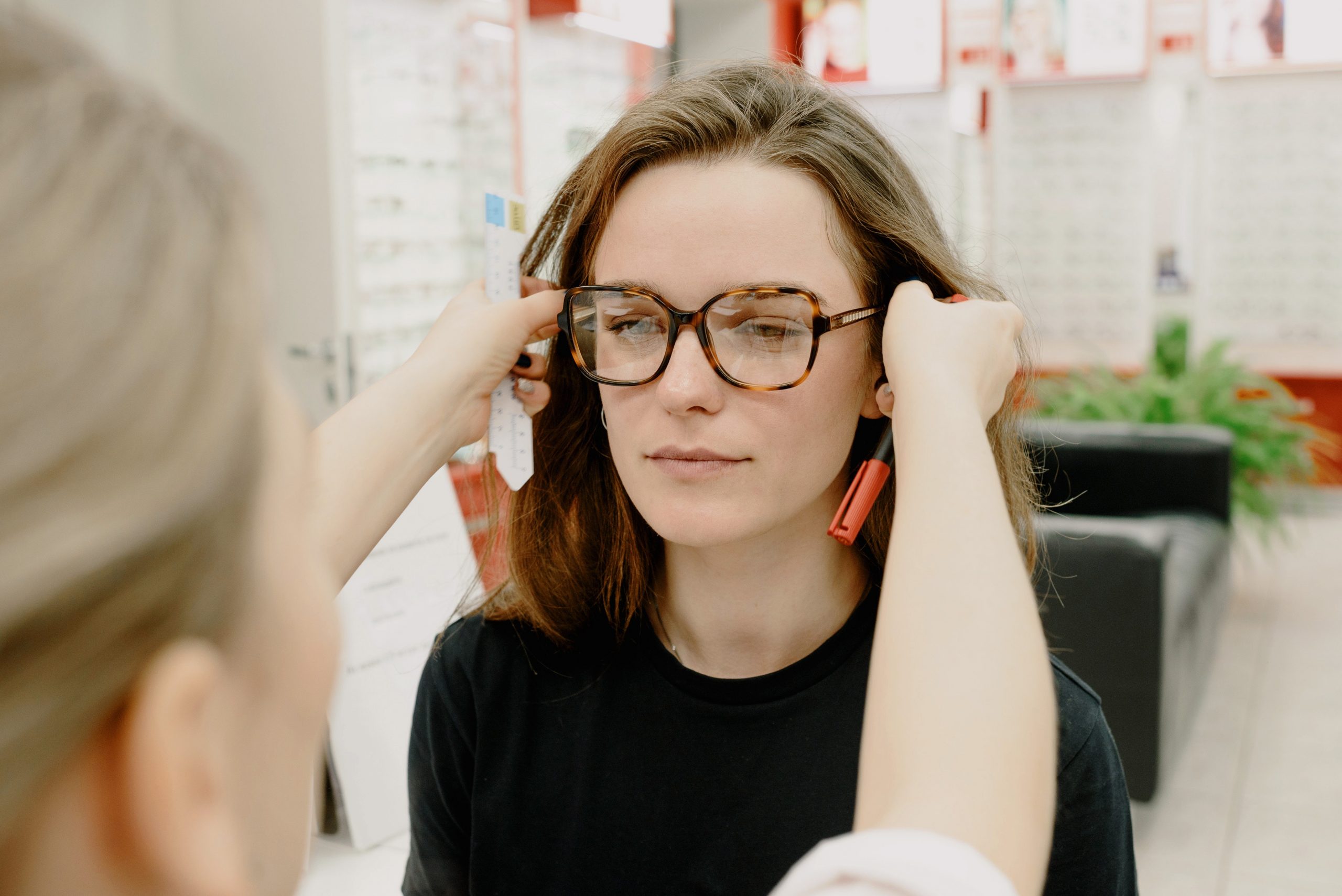OA Corner Part 6: Frame fitting basics

Ensuring a good fit is paramount
There are many factors to consider when helping a patient to select a suitable frame.
The frame needs to look good, the patient must like it, and most importantly it needs to fit well. It does not matter how fabulous a frame looks, if the fit is poor, the patient will not be able to wear it.
The first thing to do when helping a patient to choose a frame is to consider the prescription. If the prescription is low, there will be less restrictions on frame choice than a high prescription. Generally, higher prescriptions look better in plastic frames as the rims are usually thicker than metal frames, and the lens thickness will be more contained within the rim of the frame.
Plastic frames also fit over a larger area on the bridge of the nose than adjustable pads on metal frames, which distributes the weight more evenly across the bridge, and so provides greater comfort.
The lens size should also be considered, as the larger the lens size, the heavier the spectacles will be.
It is important to take the pupil diameter (PD) of the patient at this early stage in frame selection, especially with higher prescriptions, as lens thickness will be kept to a minimum if the boxed centre distance of the frame is as close to the PD of the patient as possible.
The eye size is related to the head width. If the eye size is too narrow and the sides press too tightly against the side of the head, this will cause discomfort, and can cause the frame to be forced forwards. If the eye size is too wide, the frame will feel loose and may fall forwards. The first contact of the sides should be just before the ear points.
The bridge fit is also important. With a plastic frame, the bridge needs to fit closely around the nose, with no gaps. If there are gaps at either side of the nose, this indicates the bridge is too wide, and if there is a gap at the top of the bridge, this indicates it is too narrow.
For a metal frame with pads on arms, the pads should sit comfortably either side of the nose, and the eyes should sit centrally in the frame. There should be a small gap between the lower rim of the frame and the patient’s cheeks. If the gap is too large, this indicates the bridge is too narrow, and if the frame touches the patient’s cheeks, this indicates the bridge is too wide.
The side length is also important. If the sides are too short, the frame will not be adequately secured and will slip. If the sides are too long, this will cause discomfort and can look unsightly.
The length to bend is measured from the dowel (screw) point of the frame to the ear point (top of the ear), and the drop is measured from the ear point to the end of the side. The drop length should be around 35mm for an average adult.
The other important consideration is how well the frame suits the patient, and we will consider this in next month’s article.
Sue Deal FBDO R is a practising dispensing optician, ABDO College examiner, senior tutor and supervisor for dispensing opticians. She is also a practice visitor and external moderator for ABDO.
OA Corner Part 1: What makes a good OA
OA Corner Part 2: Communications
OA Corner Part 3: A question of strategies
OA Corner Part 4: Understanding bifocals
OA Corner Part 5: Our amazing eyes